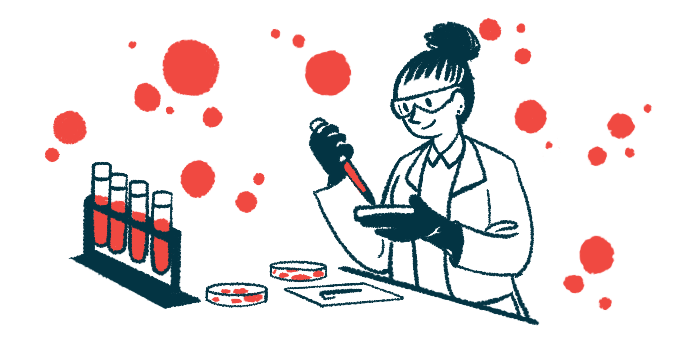Study: CTSS, GSTO1 emerge as potential biomarkers in Sjögren’s syndrome
Researchers measured differences in gene activity in several immune cell types

The proteins CTSS and GSTO1 could accurately distinguish people with primary Sjögren’s syndrome from unaffected individuals, a study suggests, meaning they show promise as diagnostic biomarkers and possible therapeutic targets for Sjögren’s.
“These insights may lead to the development of targeted therapies and improved management strategies for individuals living with [Sjögren’s],” the researchers wrote in “Integrative multi-omics analysis reveals cellular and molecular insights into primary Sjögren’s syndrome,” which was published in Heliyon.
In Sjögren’s, an abnormal immune response targets the glands that produce saliva and tears, resulting in dry eyes and mouth. In more severe cases, internal organs such as the lungs and kidneys can be affected. Symptoms typically show up among people in their 30s or 40s and nine out of 10 patients are women.
While its exact cause is unknown, an interplay between genetics, sex hormones, and environmental factors may be involved. In fact, the disease is 12 times more common among relatives of Sjögren’s patients than the general population, demonstrating the importance of genetics.
Still, “the full extent of its genetic underpinnings is yet to be completely understood,” wrote researchers in China, who measured differences in gene activity in several types of immune cells from five Sjögren’s patients and five healthy people to identify the genes associated with primary Sjögren’s, that is, when it appears as an isolated illness.
Distinguishing primary Sjögren’s, healthy people
In seven distinct immune cell types, there were 1,625 differentially expressed genes (DEGs), meaning genes with increased or decreased activity in Sjögren’s cells compared with controls. A tool to detect causal effects of gene activity on disease outcomes narrowed down the DEGs to 39 with increased activity and 27 with decreased activity.
“These findings shed light on the potential mechanisms underlying the genetic correlation between [Sjögren’s] and gene expression, offering valuable insights into the molecular basis of the disease,” the researchers wrote.
Of the 66 genes, 28 had available data on the encoded proteins in the bloodstream. From these, the proteins CTSS, GSTO1, HSPB1, and TSSC4 emerged with potential causal relationships with Sjögren’s. The findings were then validated using two other datasets.
Based on these data, CTSS, which has roles in inflammation and immune functions, distinguished healthy controls from Sjögren’s patients with an accuracy of 74.6%, supporting “the potential diagnostic value of CTSS in identifying [Sjögren’s] patients,” the researchers said.
While the protein had been identified as a possible drug target in Sjögren’s, a compound that blocks its activity showed limited therapeutic efficacy in a clinical trial.
Because the new study showed CTSS was mainly produced in immune myeloid cells, other cells that may factor in Sjögren’s, such as T-cells and B-cells, remained unaffected by treatment, according to the researchers, who said more “investigation is needed to understand CTSS’s role in different cell types and develop more effective strategies for [Sjögren’s].”
GSTO1, which was enriched in a specific subset of T-cells, was 91.4% accurate in differentiating patients from controls, suggesting it may also serve as a diagnostic biomarker. Known to promote the growth and migration of certain lung cells, GSTO1 has been identified as a marker associated with the autoimmune disease lupus.
HSPB1 and TSSC4 showed no significant differences between the patient and control groups, suggesting they weren’t strongly associated with developing Sjögren’s.
“Our study represents a significant advancement in understanding the molecular mechanisms underlying primary Sjögren’s syndrome,” the researchers said, noting more “validation and functional studies” are needed.







